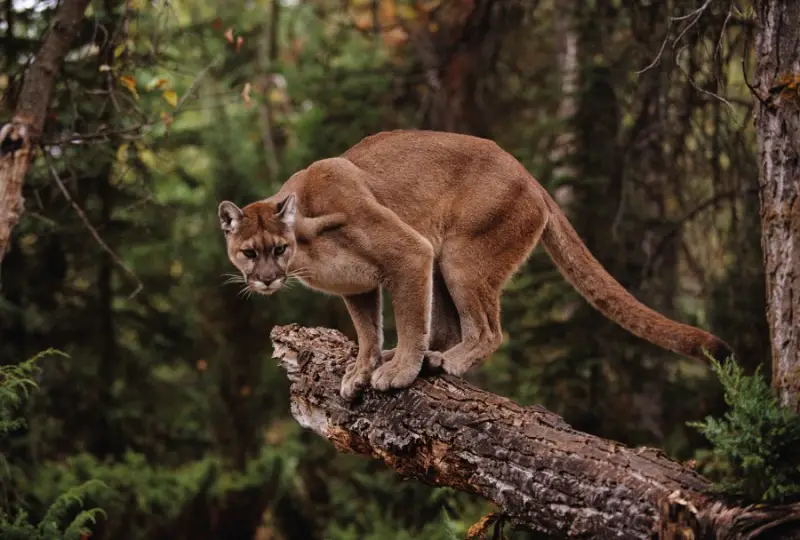Mountain lions, also known as cougars, pumas, or panthers, have long fascinated and frightened people across North America. In Missouri, their presence has sparked debates, interest, and concern, especially in rural areas where sightings have become more frequent. Once believed to be extinct in the state, these elusive predators have made a surprising return, drawing attention from wildlife experts and curious residents alike.
While mountain lions were once native to Missouri, human settlement and habitat loss drove them out more than a century ago. Over recent decades, occasional sightings and confirmed evidence suggest they are slowly reappearing. This article delves into the world of mountain lions in Missouri, exploring their history, behavior, confirmed presence, and how Missourians can coexist with these magnificent creatures.
The Historical Presence of Mountain Lions in Missouri

Historically, mountain lions roamed freely across Missouri’s forests, prairies, and hills. Early European settlers frequently encountered them, and the big cats were both feared and respected. However, as towns and farms expanded, the natural habitat of mountain lions shrank. By the early 20th century, widespread hunting and habitat destruction pushed the species out of the state.
For nearly 100 years, mountain lions were considered extirpated from Missouri, meaning they no longer had a viable, reproducing population within the state. Most experts believed the occasional reports were mistaken identities, often confusing bobcats or large dogs for mountain lions. It wasn’t until the 1990s that verified sightings began to reappear, raising questions about their true status.
Verified Sightings and Evidence in Recent Years
Since the late 1990s, the Missouri Department of Conservation (MDC) has documented a growing number of confirmed mountain lion sightings. These confirmations are based on physical evidence, such as photographs, tracks, hair samples, and even carcasses. Unlike anecdotal reports, this evidence undergoes scientific analysis to ensure accuracy.
As of recent years, the MDC has acknowledged dozens of confirmed mountain lion cases. Most of these are attributed to young male lions dispersing from established populations in western states like South Dakota and Nebraska. These lions are known to travel hundreds of miles in search of new territory. However, there is currently no evidence of a breeding population in Missouri, as no females with cubs have been confirmed.
Trail cameras, wildlife biologists, and local residents have all played roles in tracking these elusive cats. Some sightings occur near conservation areas and state parks, while others have been reported closer to rural towns. Each new confirmation adds to the growing understanding of their reappearance and movement patterns across the state.
Habitat and Range Within the State
Mountain lions require large territories to roam, hunt, and establish themselves. In Missouri, they are most often sighted in the Ozark Mountains and other forested regions with minimal human disturbance. These areas provide ample cover and prey species, such as white-tailed deer, which form the core of their diet.
Despite being highly adaptable, mountain lions prefer remote, rugged terrain. In Missouri, the availability of suitable habitat is limited compared to the vast wilderness found in the western U.S. This constraint is one of the reasons experts believe the state does not yet support a resident population. Still, Missouri’s wooded hills, river corridors, and natural parks offer sufficient temporary refuge for transient individuals.
Researchers have identified certain travel corridors used by mountain lions as they navigate the landscape. These pathways often follow natural features like ridges, valleys, and watercourses, allowing them to move discreetly and avoid populated areas. Understanding these movement patterns helps biologists predict potential sightings and interactions.
Diet and Hunting Behavior in Missouri
The primary prey of mountain lions in Missouri is the white-tailed deer, which are abundant throughout the state. A healthy adult lion can bring down a deer every few days, feeding off the carcass and covering it with leaves or debris to return later. Their powerful bodies and stealthy nature make them effective ambush predators.
In addition to deer, mountain lions may occasionally prey on smaller mammals such as raccoons, opossums, or wild turkeys. However, they typically avoid livestock and pets unless other food sources are scarce or the animal is injured. Instances of livestock predation are rare in Missouri and are thoroughly investigated by the MDC when reported.
Mountain lions hunt primarily at dawn and dusk, taking advantage of low light and their keen senses. They are solitary animals, and their hunting territories do not overlap except during the mating season. Understanding their diet and behavior is crucial for predicting potential conflicts with humans and livestock.
Safety and Interaction With Humans
Although mountain lions are powerful predators, attacks on humans are extremely rare. In Missouri, there have been no confirmed cases of mountain lion attacks on people. Nevertheless, the possibility of encountering one, especially in remote or wooded areas, has led to heightened public interest and concern.
When mountain lions are seen near residential areas, it’s usually because they are passing through. Young males tend to wander long distances and may temporarily appear in unexpected places. These animals generally avoid people and will flee if confronted. It’s important for residents to understand that seeing a mountain lion does not necessarily indicate danger.
For safety, Missourians are encouraged to keep pets indoors at night, secure livestock enclosures, and avoid leaving food or garbage outside. In the rare event of a close encounter, experts recommend making yourself appear larger, speaking firmly, and slowly backing away without turning your back. Running may trigger a chase response, so staying calm is essential.
Conservation Efforts and Wildlife Management
The Missouri Department of Conservation plays a key role in monitoring and managing mountain lion activity. The agency maintains a database of verified sightings and responds to credible reports. Their goal is not to eliminate the animals but to gather data and inform the public.
Current policies in Missouri do not support reintroducing mountain lions or establishing a breeding population. However, the state recognizes their natural return as part of broader ecological changes. As such, conservation efforts focus on education, public awareness, and conflict prevention rather than active relocation or removal.
The MDC provides resources for landowners, hunters, and outdoor enthusiasts to help them understand and coexist with mountain lions. Workshops, informational brochures, and an online reporting system have all contributed to better communication and public engagement. This proactive approach helps balance human interests with the needs of wildlife.
Myths and Misunderstandings
Despite growing awareness, mountain lions in Missouri are still surrounded by myths and misconceptions. One common belief is that the government secretly released them to control deer populations. This rumor has no factual basis and is consistently denied by the MDC. Another myth suggests that all big cat sightings are automatically dangerous, which exaggerates the threat they pose.
Some residents mistake bobcats, large dogs, or even house cats for mountain lions, especially in low-light conditions. True mountain lions are larger, have long tails, and move differently. Understanding these distinctions helps reduce false reports and unnecessary panic.
By addressing these misunderstandings, conservationists hope to foster a more realistic and informed perspective. Mountain lions are not invincible predators lurking in every forest—they are rare, shy creatures navigating a human-dominated landscape.
Future Outlook for Mountain Lions in Missouri
As sightings continue, the future of mountain lions in Missouri remains uncertain. Will they establish a breeding population? Will their presence remain limited to transient individuals? Much depends on habitat availability, human tolerance, and the ecological balance of the region.
Experts believe it is possible, though unlikely in the near future, for mountain lions to naturally reestablish themselves in Missouri. Female lions are less likely to travel long distances, and without them, a sustainable population cannot form. Nevertheless, the state remains an important link in the broader range expansion of mountain lions across the Midwest.
Continued monitoring, research, and education will shape the future of these big cats in Missouri. Scientists use genetic testing, satellite tracking, and field surveys to learn more about their movements and health. These efforts contribute to national databases and help protect the species across its full range.
FAQs About Mountain Lions in Missouri
Are mountain lions native to Missouri?
Yes, mountain lions were historically native to Missouri but were driven out by the early 20th century due to habitat loss and overhunting. In recent decades, they have begun to return to the state, mostly as transient individuals from western populations.
Are there breeding populations of mountain lions in Missouri?
No, there is currently no evidence of a breeding population. Most confirmed mountain lions in Missouri are young males passing through. The absence of females and cubs suggests that reproduction is not occurring within the state at this time.
How can I tell if I’ve seen a mountain lion?
Mountain lions are large cats with a long, thick tail, typically the same length as their body. They are tan or light brown with no spots or stripes. In contrast, bobcats are smaller, have short tails, and often display spots or mottled patterns.
Are mountain lions dangerous to humans?
Mountain lion attacks on humans are extremely rare. In Missouri, there have been no confirmed attacks. These animals are naturally shy and tend to avoid human contact. Awareness and preparedness are key to staying safe during rare encounters.
What should I do if I encounter a mountain lion?
If you encounter a mountain lion, remain calm, make yourself appear larger, speak in a firm voice, and back away slowly. Never run, as this could trigger the animal’s chase instinct. Report any sightings to the Missouri Department of Conservation.
Why are mountain lions returning to Missouri?
Mountain lions are dispersing from established populations in western states. As young males seek new territory, they occasionally move into Missouri. Suitable habitat, abundant deer, and natural corridors support their temporary presence.
Does the Missouri Department of Conservation track mountain lions?
Yes, the MDC monitors and confirms credible mountain lion sightings. They use physical evidence such as tracks, hair samples, trail camera footage, and scat to verify reports and maintain a database of confirmed encounters.
Final Thoughts on Living With Mountain Lions
Living with mountain lions requires a balance of respect, awareness, and preparedness. In Missouri, their return represents not only a biological curiosity but a reminder of the state’s rich natural heritage. While rare, their presence signals healthy ecosystems and resilient wildlife.
For residents, understanding mountain lion behavior and following basic safety guidelines can ease fears and prevent conflicts. Public cooperation and science-based management ensure that both people and predators can share the land responsibly.
Mountain lions are a part of Missouri’s evolving wildlife story—one that continues to unfold with every new sighting, every trail camera image, and every confirmed track in the mud. As long as their return is guided by knowledge and care, their presence can enrich rather than endanger the state’s wild spaces.






